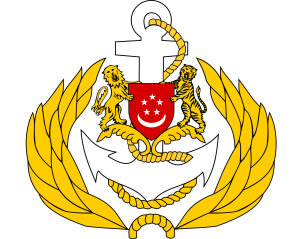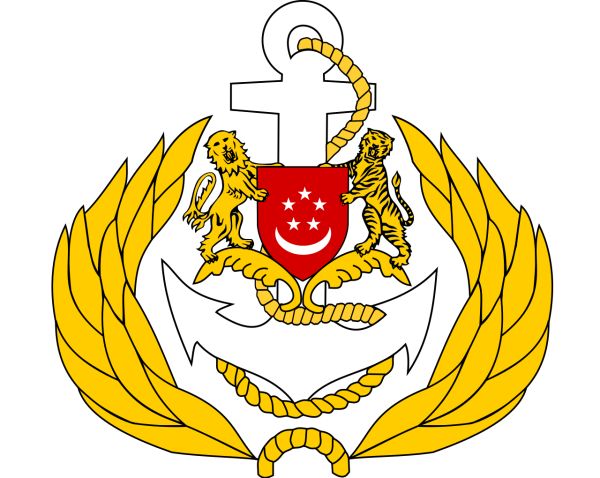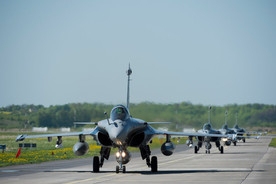
Despite being the smallest country in South East Asia, Singapore is the most economically developed and has the region’s most sophisticated military. In terms of gross tonnage and number of vessels, the Republic of Singapore Navy wins no titles. Even so, the Singaporean Navy is a formidable force and, by most measures, the most capable in Southeast Asia.
Until the start of the new century, the Singaporean Navy was very much a coastal patrol force. Its vessels were small by almost any standard and the duration of patrols usually measured in hours or a handful of days. Situated at a great maritime chokepoint – the Malacca Strait – Singapore, itself a great trading country, has always depended on the security of transit for maritime commerce in order to ensure its economic well-being. At the start of the new century, the Singaporean Navy underwent a transformation that resulted in the establishment of a formidable navy capable of projecting naval power throughout Southeast Asia and one capable of deterring would-be adversaries from threatening the small state.
The core of the fighting capability of the navy resides in the six Formidable-class frigates.Designed in France and mostly built in Singapore, the ships of the class displace 3200 tons. All six vessels entered service between 2007 and 2009, replacing six Sea Wolf-class missile boats. These ocean-going ships are home to a comprehensive suite of sensors for anti-air, -surface, and –sub-surface targets that can be targeted by eight Harpoon anti-ship missiles, an anti-submarine warfare helicopter, and thirty-two ASTER surface-to-air missiles. The Formidable-class marked a dramatic increase in the capabilities of the Singaporean Navy. To put the transformation in context, the six vessels of 3200 ton displacement ships with ninety crew members each replaced six vessels displacing 226 tons with forty crew members each.
While the Formidable-class frigates are excellent for offshore patrol in the South China Sea and maritime security operations elsewhere in the region, they are not ideally suited for the patrol of the vital Malacca Strait. As such, the Singaporean Navy’s modernisation has been a tiered experience with the Navy not discarding its long-held role of littoral patrol and defence. To fulfill this mission, the Singaporean Navy has six Victory-class corvettes and eleven Fearless-class patrol vessels. The Victory-class corvettes each displace 600 tons and were commissioned between 1990 and 1991. They boast a capable sensor suite that target Harpoon anti-ship missiles and Barak 1 surface-to-air missiles. The eleven Fearless-class patrol vessels each displace 500 toons and were commissioned between 1996 and 1998. They are equipped for anti-submarine warfare duties.
With maritime insecurity and tensions growing in Southeast Asia, Singapore is keen on improving its littoral patrol capabilities by replacing the eleven Fearless-class patrol vessels with eight indigenously designed and built Independence-class corvettes (the class is euphemistically called littoral mission vessels in Singapore). As with the transition from missile boats to the Formidable-class frigates, here too Singapore is transitioning to larger, more capable vessels. The Independence-class ships each displace 1200 tons and are each equipped with twelve MICA surface-to-air missiles. The eight ships are to be commissioned between 2017 and 2020.
While combat and patrol are the main duties of the Republic of Singapore Navy, amphibious transport vessels form an important part of the Singaporean fleet. Between 2000 and 2001, Singapore commissioned four indigenously designed and built Endurance-class amphibious transport docks. Displacing over 8500 tons at full load, the vessels are the largest commissioned vessels in Singaporean service. The ships of the class can transport a few hundred men and their equipment, along with landing craft and helicopters for their transport to the coast. The Endurance-class ships have been active in Singapore’s efforts in maintaining maritime security as far the Persian/Arabian Gulf and the Gulf of Aden. They also provide an important service in providing sea transport for the Singapore Armed Forces’ overseas training bases in countries such as Australia and New Zealand. Given the size of the ships, the lead ship of the Endurance-class, the RSS Endurance, was the first Singaporean Ship to circumnavigate the world, improving the visibility of one of the world’s smallest countries.
To increase its capacity to deter neighbouring countries, Singapore has developed a small but capable submarine force, currently, composed of two ex-Swedish Archer-class (Västergötland-class) submarines. First commissioned by Sweden in 1987 and 1988, the two submarines of the Archer-class were commissioned into Singaporean service in 2011 and 2013, respectively. Despite being used ships, the ships have not seen much service, having been mothballed by the post-Cold War Swedish Navy. After their purchase by Singapore in 2005, the two submarines were modernised and fitted with a new (additional) hull section that houses an air-independent propulsion system, a capability that improves the underwater endurance (not requiring snorkelling) of these diesel-electric submarines from a few days to a few weeks. In 2015, Singapore retired two very elderly ex-Swedish Challenger-class (Sjöormen-class) submarines. These ships were the last of four submarines of the class brought into Singaporean service for training the first generation of Singaporean submariners. While the retirement of the Challenger-class has resulted in the shrinking of Singapore’s four-strong submarine fleet to just two submarines, the fleet will be restored to four by 2020 when two on-order German-built Type 218 submarines enter service.
Despite being the smallest country in Southeast Asia, Singapore is home to a very capable navy. With increasing tensions in the South China Sea and elsewhere in the Indo-Pacific littoral, the Republic of Singapore Navy will likely remain a force to be reckoned with.




